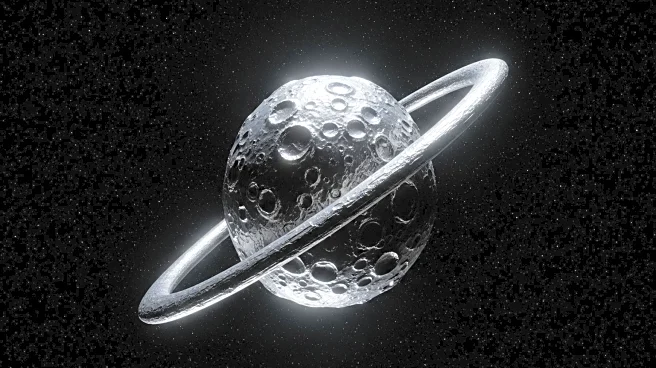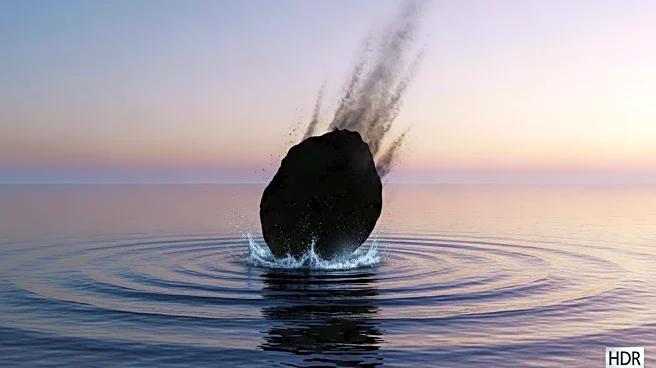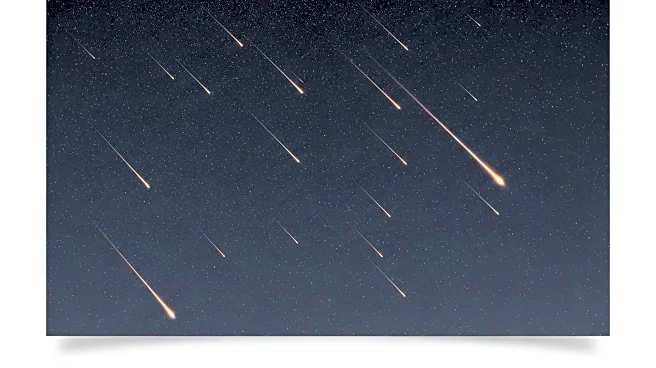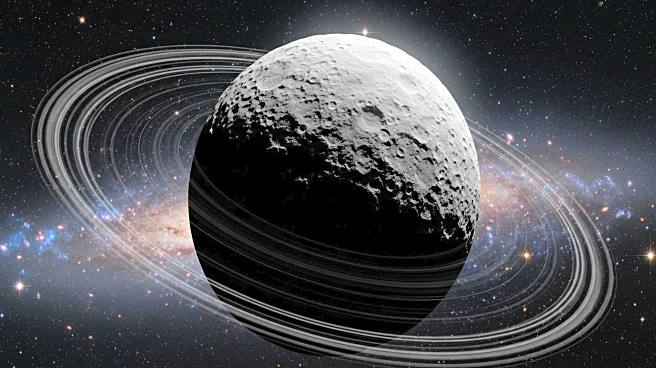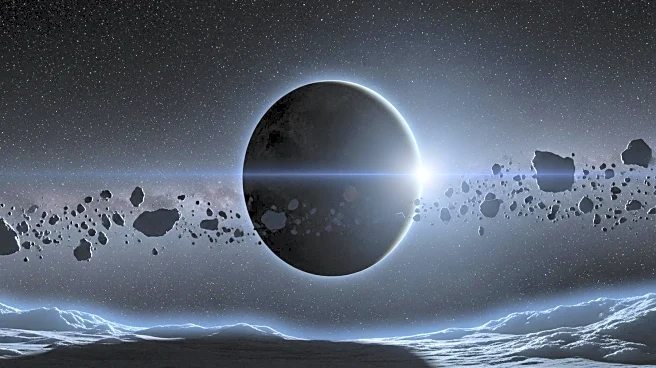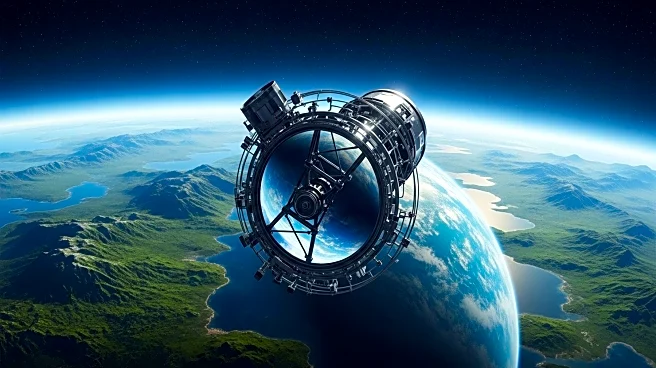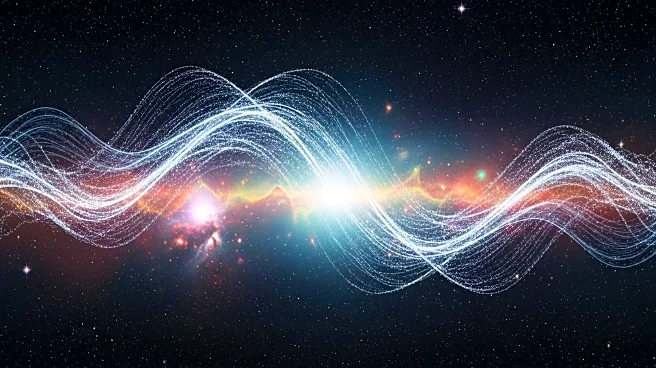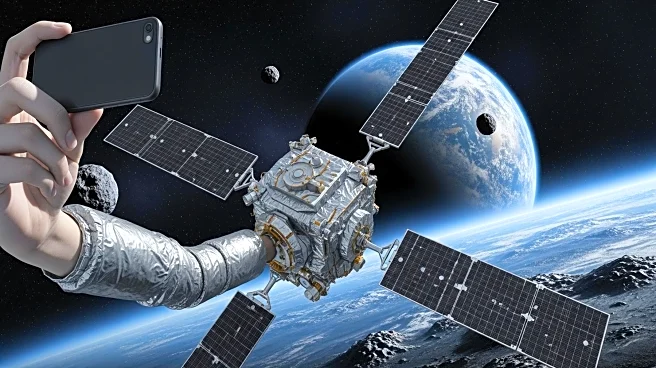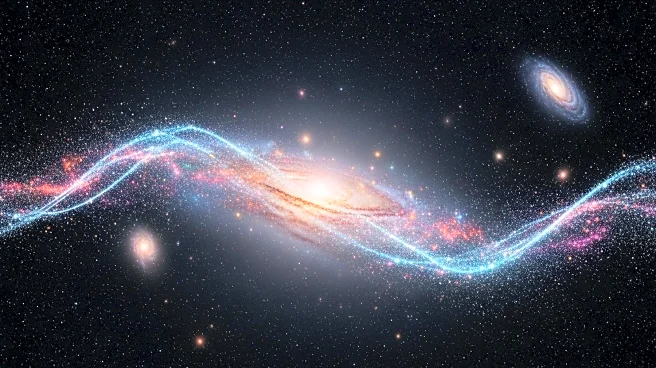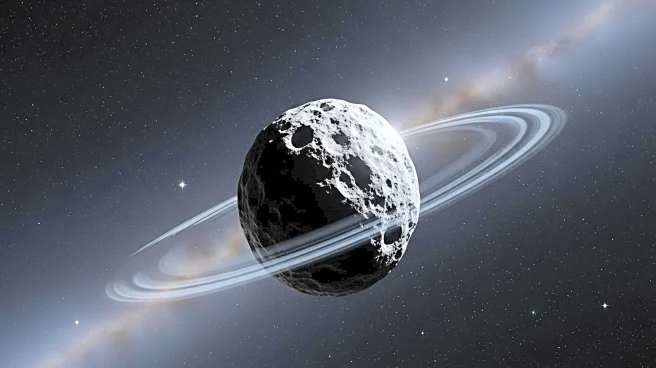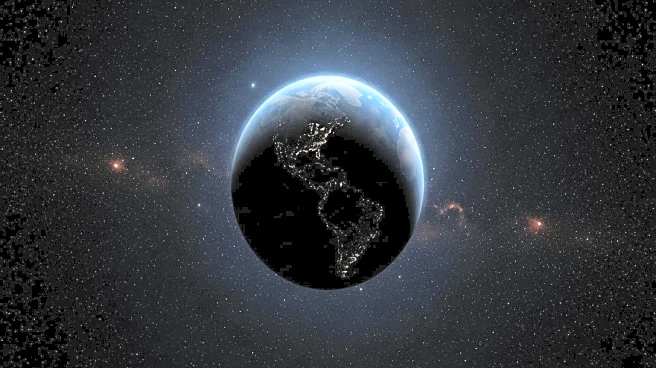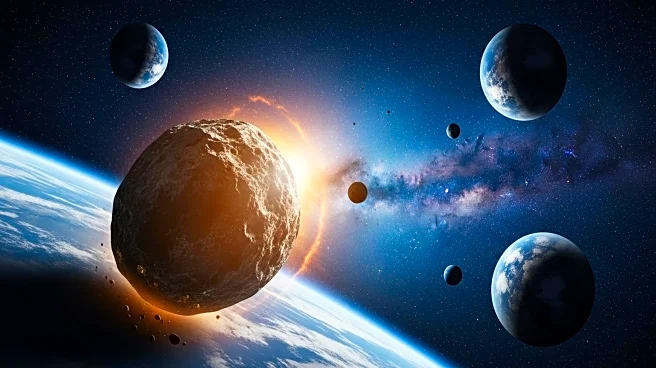What is the story about?
What's Happening?
Two recent studies presented at the Europlanet Science Congress have provided new insights into asteroid spin and impact strategies. Researchers led by Wen-Han Zhou of the University of Tokyo used data from the Gaia mission to study asteroid spin patterns, revealing a balance between collision-induced motion and internal friction. Another study by Rahil Makadia's team at the University of Illinois developed probability maps to identify safe impact sites on asteroids, avoiding gravitational keyholes that could redirect them toward Earth. These findings enhance understanding of asteroid behavior and inform deflection mission planning.
Why It's Important?
Understanding asteroid spin and structure is crucial for planetary defense, as it affects how asteroids react to deflection missions. The studies highlight the importance of targeting specific impact sites to prevent asteroids from entering gravitational keyholes, which could lead to future Earth impacts. This research is vital for developing effective strategies to protect Earth from potential asteroid threats, ensuring long-term safety.
What's Next?
Future research will focus on applying these methods to larger samples of asteroids, leveraging upcoming observatories like the Vera C. Rubin Observatory. The probability maps developed by Makadia's team will guide mission planners in designing safer deflection missions, potentially using ground-based observations for preliminary analysis. Continued study of asteroid spin and impact strategies will refine planetary defense techniques.
Beyond the Headlines
The studies underscore the importance of international collaboration in planetary defense efforts, as asteroid threats are a global concern. The research also highlights the role of advanced technology and machine learning in understanding cosmic phenomena, paving the way for innovative solutions to protect Earth.
AI Generated Content
Do you find this article useful?
